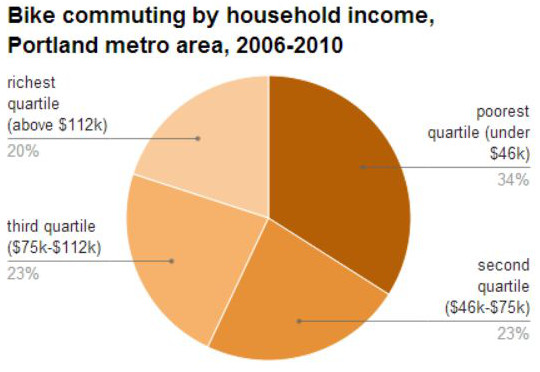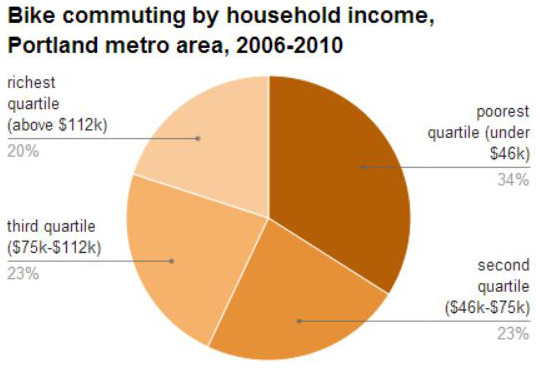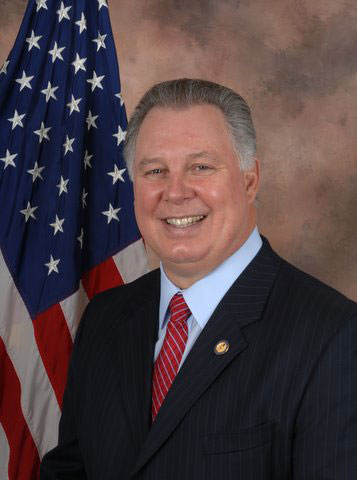
Source: Census Transportation Planning Projects. Chart by BikePortland.
Last week, we shared some new Census data showing that people who bike to work in Portland have quicker commutes than you might expect. This week, let’s look at a different question: who bikes?
“We have to prioritize investments in communities that have not been prioritized for investments in the past.”
— Gerik Kransky, BTA
It turns out that in the Portland metro area, people of every household income level bike for transportation. But the lower your household’s income, the more likely you are to use a bike to get to work.
That fact — which national data has shown for years but had never been available at the local level — is part of the thinking behind a rising focus in the bicycle advocacy community on the ways that biking can help underprivileged groups.
“People living with multiple resource constraints are in the best position to benefit from increased access to healthy, active transportation options,” Mychal Tetteh, CEO of Portland’s Community Cycling Center, said Thursday. “If we want to see bike mode share increase, a focus on historically underesourced populations will result in the greatest return on investment.”
According to the new estimates, which are based on Census surveys that include margins of error, the poorest 25 percent of Portland-area households are home to about 34 percent of the metro area’s bike commuters. The other three quartiles are quite evenly split, suggesting that bike commuting is both a useful necessity for some and a desirable choice for most.
A bill introduced yesterday in the U.S. House of Representatives reinforces this concept. The bipartisan measure championed by the League of American Bicyclists would create a low-interest long-term loan program for communities to build biking and walking networks, with one quarter of the cash set aside to be used in low-income communities.
H.R. 3978 is worth just $11 million for the whole country — about enough for each state to get either one new stoplight, several blocks of sidewalk, a few bike share kiosks or a few miles of bikeways.
On the other hand, it’s showing (yet again) that the appeal of active transportation can cross party lines in a deeply divided Congress.
“It’s a good idea, it’s a good bill and we should certainly support it,” Bicycle Transportation Alliance Advocacy Director Gerik Kransky said in an interview Thursday. “It takes a small but important step toward acknowledging that we have to prioritize investments in communities that have not been prioritized for investments in the past. … These are the kinds of policy decisions we’re going to have to make to let low-income communities make their own decisions.”
Kransky said the risk that a bill like this becomes an excuse for politicians to avoid bigger changes is “always out there.” But he hopes the small amount of money could prove that there’s public support for further shifts, including increased “self-deterimination” by poorer communities of the transportation investments in their neighborhoods.
“A bill like this passes, the process is set forth, money is spent, the outcome is fantastic and the community support is there, then all of a sudden we have a working model for engagement and communication,” Kransky said. “If this works, we can use it as a model at the state or local level.”


